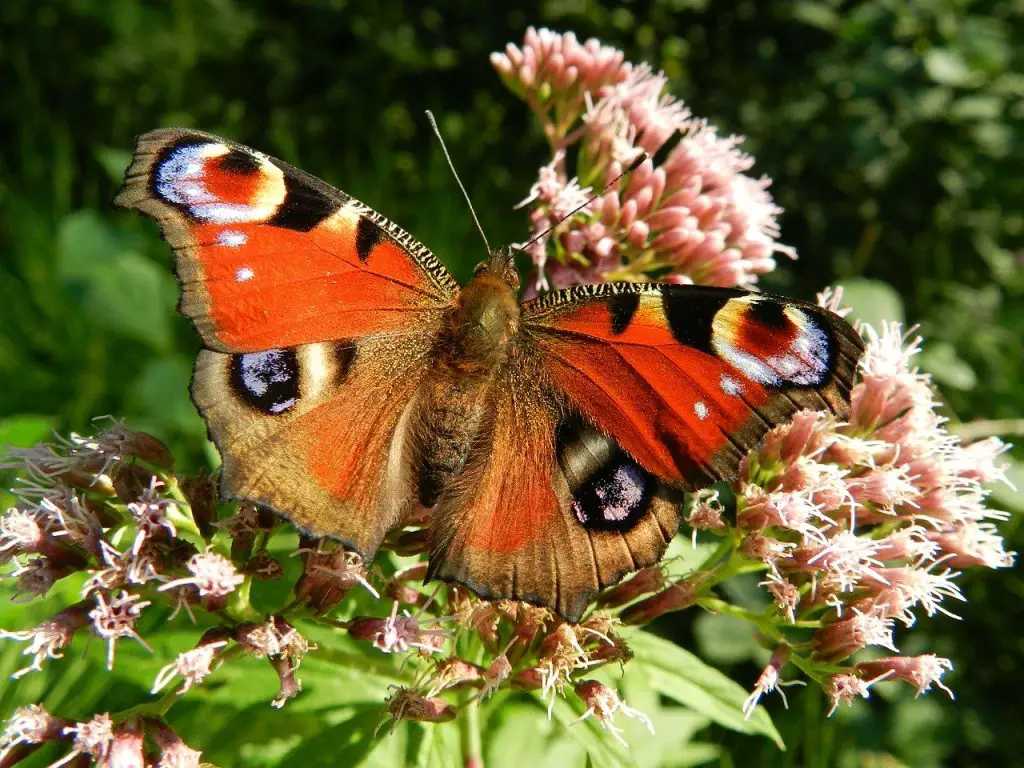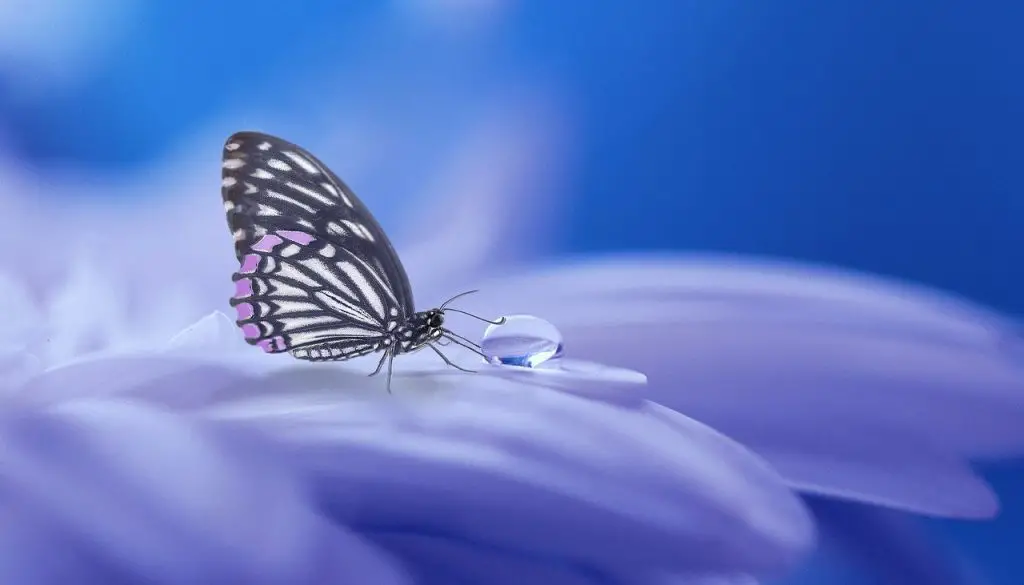“What the caterpillar calls the end of the world the master calls a butterfly.”
Richard Bach, Novelist
36 Butterfly Facts and Stats Everyone should know
Butterflies are insects from the order Lepidoptera.
They often have colored wings and a rather unsteady flight pattern.
Although you might know some facts about butterflies, I guess there are still plenty of facts you don’t know yet.
In this article, all facts and stats regarding butterflies you need to know are given.
Comprehensive List of Butterfly Stats & Facts
- More than 17,500 butterfly species populate our planet.
- In the U.S. alone, there are around 750 different species.
- The size of butterflies depends on the species and ranges from 0.5 – 12 inches (1,3-30 cm).
- A butterfly has a lifespan from around one month, depending on the species and the outer circumstances.
- However, the whole lifecycle from the egg status until the butterfly dies usually lies between 2 and 8 months.
- The largest butterfly in the world is the Queen Alexandra’s birdwing.

- The smallest butterfly on our planet is the Western Pygmy Blue.
- While large monarchs can weigh up to one gram, the smallest butterflies only weigh around 0.04 grams.
- The fastest butterfly is the skipper. This butterfly species can reach up to 37 mph. This is faster than most land animals.
- Butterflies can be found on almost all continents, except for Antarctica.
- Butterflies have quite big wings, especially when compared to their rather small body.
- They have six legs since they belong to the group of insects.

- Butterflies will often have one preferred sort of plant where they feel comfortable and also hide their eggs.
- The lifecycle of a butterfly starts as an egg. After a caterpillar hatches out of the egg, it takes quite a while until they turn into butterflies.
- It will usually take from 10 to 15 days until a caterpillar develops into a butterfly.
- Baby butterflies will have a pleasant meal eating the cocoon they hatched out of at the beginning of their life.
- Butterflies often have large wings.
- Butterflies belong to the order of Lepidoptera.

- Butterflies often do not pollute the environment with feces. They rather consume all their food and transform it into energy.
- Butterflies taste with sensors under their feet.
- Butterflies can be like vampires, soaking blood of smaller animals and feed on them.
- Butterflies are usually categorized as cold-blooded animals.
- Since they are cold-blooded, butterflies are only able to fly if it is sufficiently warm. This usually means that butterflies do not have the ability to fly if the air temperature drops under 50 degrees Fahrenheit (10 degrees Celsius).
- The Cabbage White is the most common butterfly species in the U.S.

- Butterflies usually soak instead of sip it due to their long tongues.
- The eyes of a butterfly can see beyond the ultraviolet spectrum.
- A single butterfly eye usually consists of around 6,000 lenses.
- Monarch butterflies can travel as far as 3,000 miles. They mainly migrate to warmer climate zones in winter.
- Not only the Monarch butterfly travels long distances, also many other butterfly species try to escape the cold and travel hundreds or even thousands of miles.
- Butterflies don’t have ears but rather have motion stability sensors in their antennae in order to be able to locate their surroundings.

- A group of butterflies is often called a flutter. This is quite intuitive since many butterflies in a small area look like a giant construct with myriads of wings.
- Large groups of butterflies can cause significant levels of noise, especially when they are in the eating mode.
- Many butterfly species are actually able to disguise and to hide in their surrounding environment.
- Butterflies often feed on mud, where they get important elements and minerals from. This behavior has been observed mainly for male butterflies.
- The color of a butterfly is usually not its original color, since the wings of butterflies are usually transparent. What we perceive as color is in fact just the reflecting light falling on the butterflies’ wings.
- Butterflies are closely related to moths and they are part of the same class of insects.
Sources
https://en.wikipedia.org/wiki/Butterfly
https://www.nationalgeographic.com/animals/invertebrates/m/monarch-butterfly/
https://www.nature.com/articles/d41586-019-03521-4

About the author
My name is Andreas and my mission is to educate people of all ages about our environmental problems and how everyone can make a contribution to mitigate these issues.
As I went to university and got my Master’s degree in Economics, I did plenty of research in the field of Development Economics.
After finishing university, I traveled around the world. From this time on, I wanted to make a contribution to ensure a livable future for the next generations in every part of our beautiful planet.
Wanna make a contribution to save our environment? Share it!